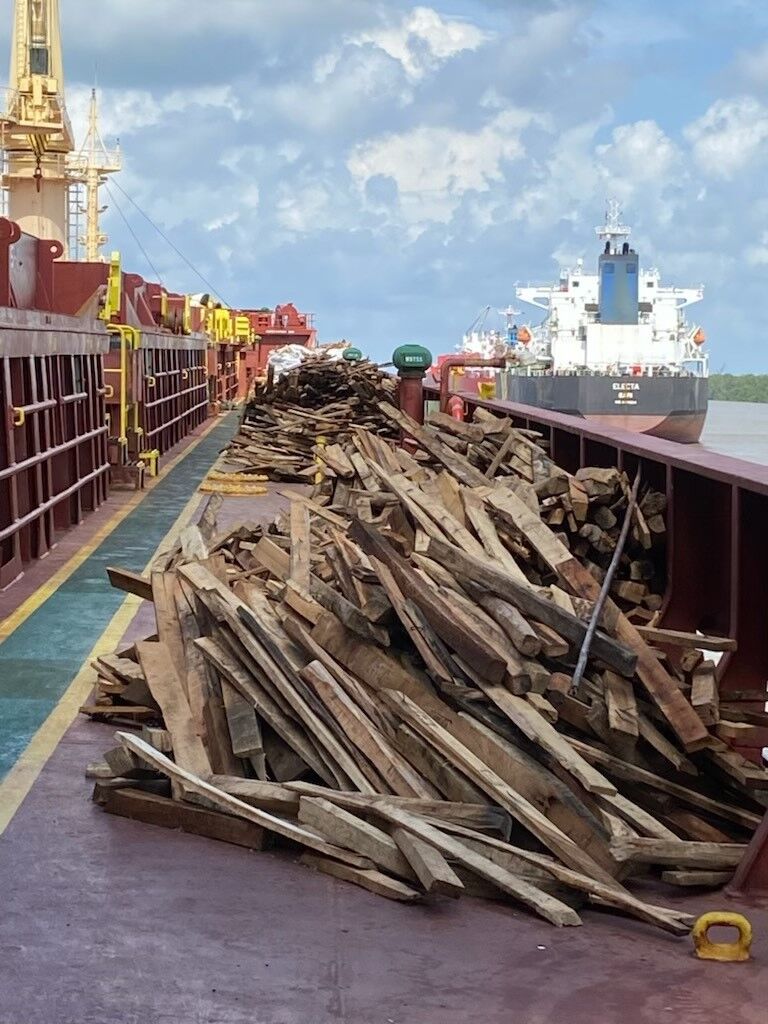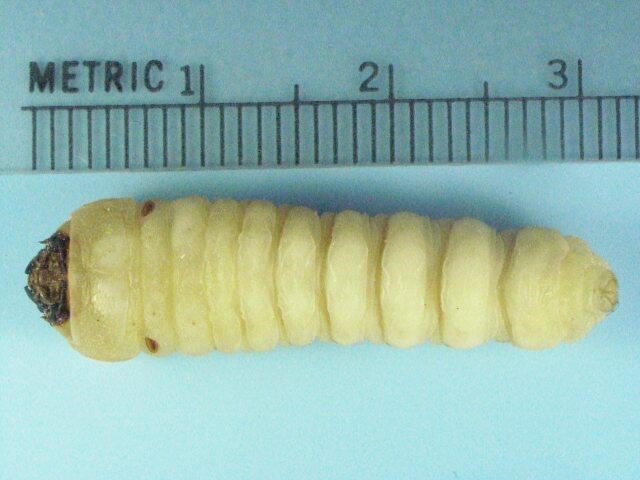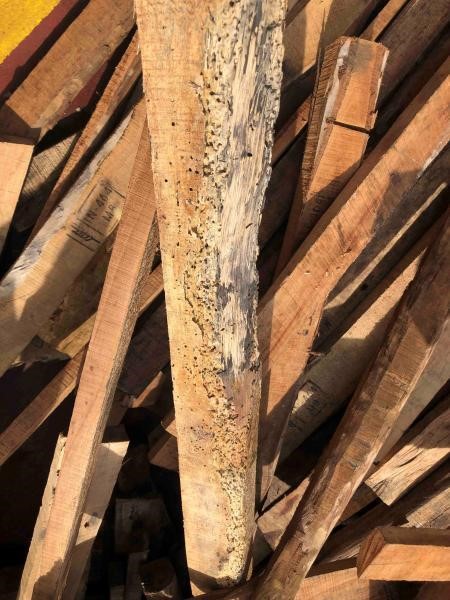A guest blog written by Gary Lovett, Cary Institute of Ecosystem Studies; and Diana Davila, UTC Overseas, Inc.
Gary Lovett died suddenly in December 2022. The future of this initiative is unclear.
Importers are learning that relying on the ISPM#15 mark to ensure that solid wood packaging material is pest-free can be a costly mistake. We propose a private sector solution for keeping insect pests out of wood packaging material and dunnage used in international trade. This voluntary program will supplement ISPM#15 procedures, and implementing it will require cooperation from U.S. government agencies.

intercepted by CBP at Port of New Orleans; CBP photo
Readers of this series of blogs are well aware that international trade using solid wood packaging material (WPM) such as pallets, crates and dunnage can transport wood-boring insects into the U.S., and that these pests are one of the biggest threats to forest health in this country. The international regulation known as ISPM#15 (International Sanitary and Phytosanitary Measures #15), adopted by the U.S. in 2006, was supposed to solve this problem by mandating treatment of WPM to kill embedded insects through heat, fumigation, or other approved treatments. Treated wood is marked with an official stamp. Research has shown that this has only been partially effective, and the U.S. regularly receives WPM that is marked as having been treated, but is nonetheless infested with insects. This can occur either because the treatments are not 100% effective, or because they were improperly applied- or not applied at all, and the wood is fraudulently marked- by our trading partners.
This is a big problem not only for our forests, but for shippers and importers as well. Importers purchase wood and dunnage marked with the ISPM#15 stamp expecting it to be pest-free, but Customs and Border Protection (CBP) inspectors at ports often find insects in the wood. In an average year, CBP finds insect infestations in WPM in about 700 incoming shipments. Depending on the type of insect, this can result in a large fine for the importer or shipper (up to the value of the cargo) and they could also be required to re-export the infested cargo immediately. The re-exportation can be especially costly if an entire ship needs to be turned around and sent elsewhere because of infested WPM on board. In a recent example (see photo above), the Pan Jasmine, a 590-foot, Panamanian-flagged vessel, was found by CBP on July 17, 2021 to have infested dunnage on board and was turned around before it could dock at the Port of New Orleans (see photo above). These episodes often cost importers hundreds of thousands of dollars each time they happen, and in some cases the total cost for a single incident can be in the millions of dollars.

Importers are learning that relying on the ISPM#15 mark to ensure that WPM is pest-free can be a costly mistake. To try to address this problem, a coalition of shippers that use the Port of Houston established a committee to investigate the issue and try to come up with solutions. The committee, called the Houston WPM and Dunnage Coalition, includes a core group that includes the two of us plus Peter Svensson of Clipper Americas and Richard Brazzale of Lake Shore Associates. The full group includes representatives of several other shipping companies, and we also work with staff from the USDA Animal and Plant Health Inspection Service (APHIS) and CBP.
We suggest a new approach by which importers can help prevent insect infestations of their WPM. Importers routinely use international inspection companies to check merchandise before it is shipped. Working at the loading port, these companies make sure that the cargo is what was ordered and that it is in good condition. There are several large international inspection companies that provide this service to importers for a fee. If the inspectors could be trained to also check for signs of insect infestation in the WPM, the problem could be addressed prior to shipment, reducing the risk of fines and re-exportation when the cargo reaches the U.S. We have spoken with several inspection companies that are eager to provide this service, and we believe that many shippers and importers will conclude that these pre-loading inspections can save them money by avoiding the high risk of fines and re-exportation.
To move forward with this program, inspection companies need to have their personnel trained to spot pest infestations in WPM. CBP has the most experience in this, and we hope they will agree to offer training sessions, or at least provide training material. We also believe that importers and shippers would benefit from creating an organization to oversee the program, certify inspectors and collect information on reliable producers of pest-free WPM. We hope a pilot program can be started within the next year, and that a full program can be ramped up after that. While we are proposing this for cargo bound for the U.S., the system is in concept applicable to cargo moving anywhere in the world. And while we focus on insects in WPM, the same approach could be used to inspect for other invasive species; for instance, seeds on the floor of a shipping container or insect egg masses on containers or cargo.
This program offers a private-sector solution to the problem of infested WPM, and represents the first step being sought within the industry to mitigate the risk of pests arriving to the U.S., and the loss of confidence in the ISPM#15 certification being provided by WPM manufacturers. Other possible measures will be discussed in a subsequent blog post. The program would supplement, not replace, ISPM#15 regulations, and importers would still be required to use ISPM#15 compliant WPM. However, this program would reduce companies’ reliance on the ISPM#15 system, which has proven undependable. Developing this system for international shipments of WPM would provide a win-win—good for shippers and importers, and good for forests around the world.
[For Faith Campbell’s blogs on this topic, click on the category “wood packaging,” which is found below the monthly list of blogs on this site.]
